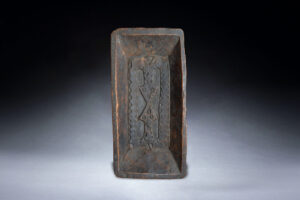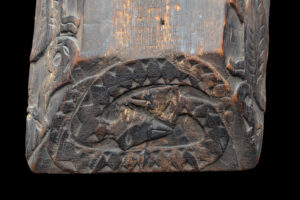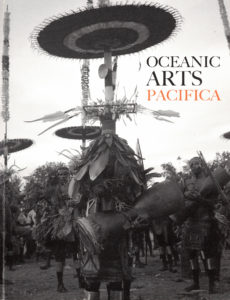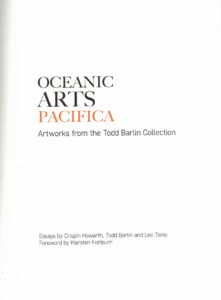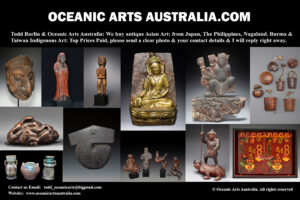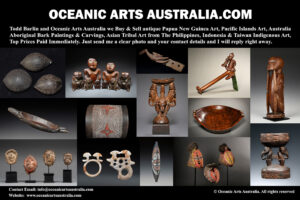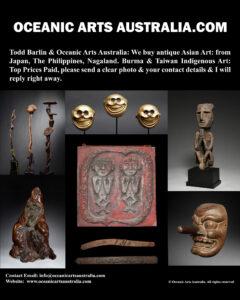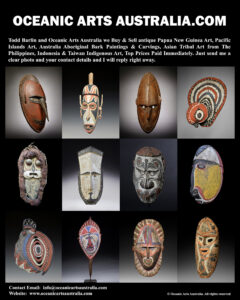A Fine Old Paiwan Tribe Carved Tray South Taiwan Late 19th Century
| Collection No. | SOLD - Please see more Fine Oceanic & Aboriginal Art on my website |
|---|---|
| Size | 31.5cm x 15.5cm |
A Fine Old Paiwan Tribe Carved Tray South Taiwan Late 19th Century. We specialize in the rare & beautiful art of the indigenous people of Taiwan.
This finely carved chief’s offering tray is from the Paiwan People of South Taiwan / Formosa Island. Dating from the late 19th to very early 20th Century and showing deep old patina and wear. The tray was likely used to offer Betel Nut to guests. Carved from a single piece of wood in a rectangular form which is decorated on the inside bottom with two Hundred-Pacer Snakes (Agkistrodon acutus) which is an important clan motif in which one of the major characters in Paiwan mythology, and is generally considered to be the pro-creator of the Paiwan Nobility. On the bottom of the tray, all four sides are deeply incised Paiwan clan designs, on either end of the tray are again two entwined Hundred-Pacer Snakes, and on the longer sides are two Deer nose to nose and below them is a single head which is relating to the Paiwan being once fierce headhunters.
The Paiwan are one of several indigenous peoples living in the mountainous interior of Taiwan. Paiwan society is hierarchical, divided into high nobles, minor nobility, and commoners. In former times, only the high nobility was entitled to create or commission certain forms of human images, which portrayed important ancestors (tsmas). The ancestors, whose supernatural influence was controlled by the nobility, had the power to either help or harm the community, depending on whether their spirits received proper respect through ritual observances and offerings. The houses of Paiwan nobles were both the physical and artistic centres of ancestral power and imagery. The remains of noble ancestors were buried within the houses of their descendants, and their images adorned the doorways, house posts, and other architectural elements.
I have been collecting Oceanic Art for 40 years and have always been fascinated with Paiwan & other Taiwan Indigenous tribes’ art as they are the known ancestors of the ancient Polynesians. The Taiwan Indigenous tribe’s art styles have connections & influences on not only Polynesian Art but also on Southeast Asian Art and through Indonesia & island of New Guinea.
Provenance: This fine tray came from the collection of the family of Lin Tien Wang who was working with Paiwan Villages in the early 1930s.
The Todd Barlin Collection of New Guinea Art & Oceanic and Asian Art
INQUIRE HERE
To see many more rare items and the finest masterpieces, please make an appointment with us to visit the gallery.
For all inquiries, please contact us.

